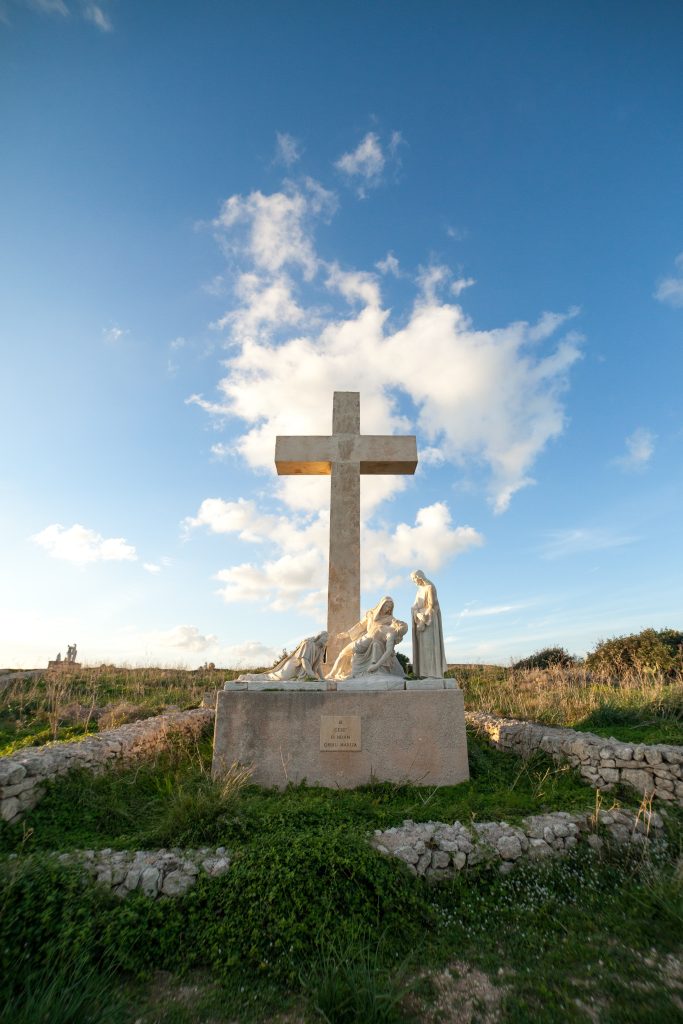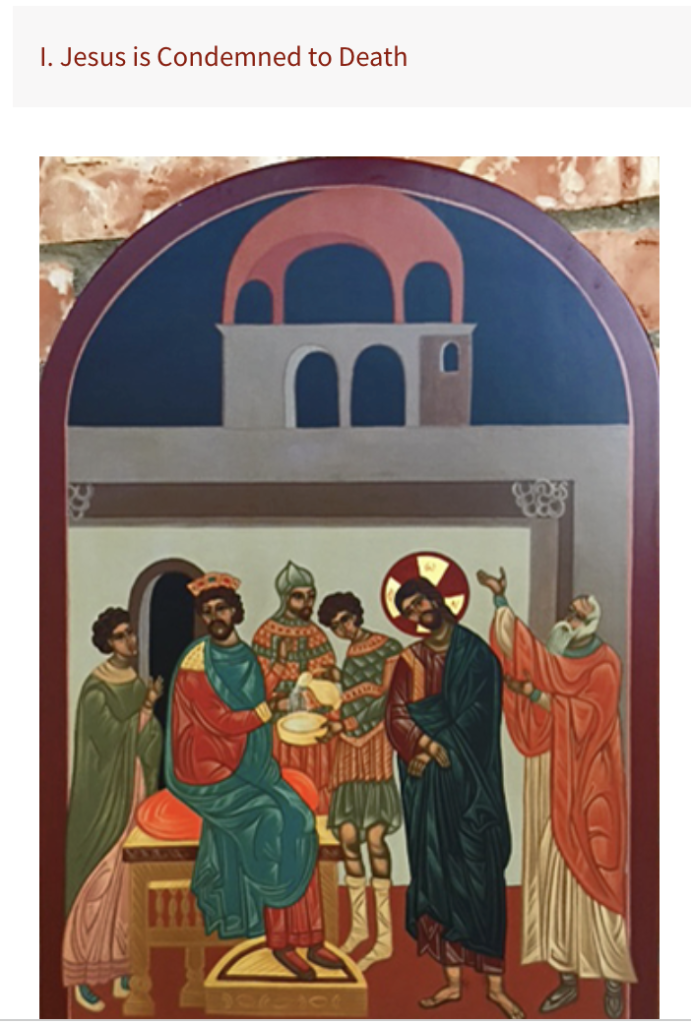Lent 2023, Day 3: Stations of the Cross.

All across the globe today, Christians- Catholics and Protestants alike- will take to their churches to practice the prayerful devotion of the Stations of the Cross. From the Wikipedia page:
The Stations of the Cross or the Way of the Cross, also known as the Way of Sorrows or the Via Crucis, refers to a series of images depicting Jesus Christ on the day of his crucifixion and accompanying prayers. The stations grew out of imitations of the Via Dolorosa in Jerusalem, which is a traditional processional route symbolising the actual path Jesus walked to Mount Calvary. The objective of the stations is to help the Christian faithful to make a spiritual pilgrimage through contemplation of the Passion of Christ. It has become one of the most popular devotions and the stations can be found in many Western Christian churches, including those in the Roman Catholic,[1] Lutheran,[2][3] Anglican,[4] and Methodist traditions.[5][6]
Commonly, a series of 14 images will be arranged in numbered order along a path, along which worshippers—individually or in a procession—move in order, stopping at each station to say prayers and engage in reflections associated with that station. These devotions are most common during Lent, especially on Good Friday, and reflect a spirit of reparation for the sufferings and insults that Jesus endured during his passion.[7][8][9] As a physical devotion involving standing, kneeling and genuflections, the Stations of the Cross are tied with the Christian themes of repentance and mortification of the flesh.[1][10]
The style, form, and placement of the stations vary widely. The typical stations are small plaques with reliefs or paintings placed around a church nave. Modern minimalist stations can be simple crosses with a numeral in the centre.[7][11] Occasionally the faithful might say the stations of the cross without there being any image, such as when the pope leads the stations of the cross around the Colosseum in Rome on Good Friday.[12]
Growing up Apostolic Pentecostal, and then Nondenominational Christian, the Stations of the Cross were definitely not in any collection of praise and worship observances I was privy to. Yet, I found beauty in them when I began attending Episcopal churches in 2010, and I thought I’d share with you some ways to practice right at home, especially if you’re one of the millions who got hit/ or is getting hit by that megastorm this week.

Read through the Stations
You can read through the Virtual Stations of the Cross at the website for The Episcopal Church of the Annunciation in Lewisville, Texas here. Below is the first station:

V. We adore you, O Christ, and we bless you:
R. Because by your holy cross, you have redeemed the world.
As soon as it was morning, the chief priests, with the elders and scribes, and the whole council, held a consultation; and they bound Jesus and led him away and delivered him to Pilate. And they all condemned him and said, “He deserves to die.” When Pilate heard these words, he brought Jesus out and sat down on the judgment seat at a place called the Pavement, but in the Hebrew, Gabbatha. Then he handed Jesus over to them to be crucified.V. God did not spare his own Son:
R. But delivered him up for us all.Let us pray. (Silence)
Almighty God, whose most dear Son went not up to joy but first he suffered pain, and entered not into glory before he was crucified: mercifully grant that we, walking in the way of the cross, may find it none other than the way of life and peace; through Jesus Christ your Son our Lord. Amen.
All
Holy God,
Holy and Mighty,
Holy Immortal One,
Have mercy upon us.
Read it all here.
Watch the Stations
Or, you can watch this video from Christ Episcopal Church in Ponte Vedra Beach, Florida, featuring art and music along with prayers:

- Go on a video tour of the Via Dolorosa in Jerusalem.
- Listen to the classic Sandi Patty song “Via Dolorosa“.
